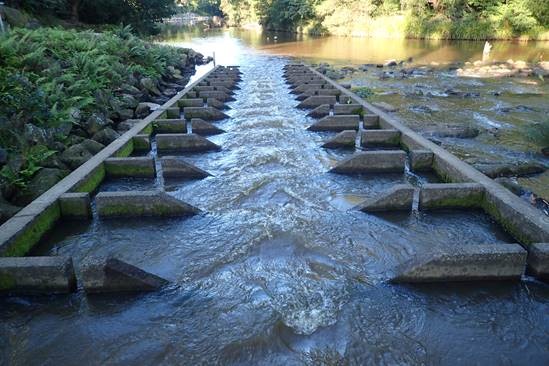|
|
Trapezoidal fishwayTrapezoidal fishway – Key considerations Select from the tabs below In addition to the general information for all fishway types, the following applies to trapezoidal fishways. Requirements for effective passageSimilar to vertical slot fishways, trapezoidal fishways are particularly useful in that they are relatively self-adjusting and maintain constant velocity and turbulence levels throughout the fishway at varying flows, and are therefore able to operate over a fairly wide range of headwater and tailwater levels[2]. Suitability and limitationsThese fishways are relatively inexpensive and generally suitable for restoring fish passage where the head differential is <3 m. They are designed to safely enable the passage of small fish by producing low water velocities and turbulence[2]. Splash zones at the edges of the trapezoidal fishways may also facilitate the passage of climbing fishes such as elvers or cling gobies[1]. Precast-box culverts can be used to construct trapezoidal fishways[2]. Most debris appear to pass down the middle of the channel, reducing maintenance requirements compared to other fishway types[2]. Disclaimer: In addition to the standard disclaimer located at the bottom of the page, please note the Fishways (biopassage structures) disclaimer. References
Last updated: 10 May 2021 This page should be cited as: Department of Environment, Science and Innovation, Queensland (2021) Trapezoidal fishway – Key considerations, WetlandInfo website, accessed 8 May 2025. Available at: https://wetlandinfo.des.qld.gov.au/wetlands/management/fish-passage/technologies/fishway-options/trapezoidal/key-considerations.html |

 — Department of the Environment, Tourism, Science and Innovation
— Department of the Environment, Tourism, Science and Innovation

